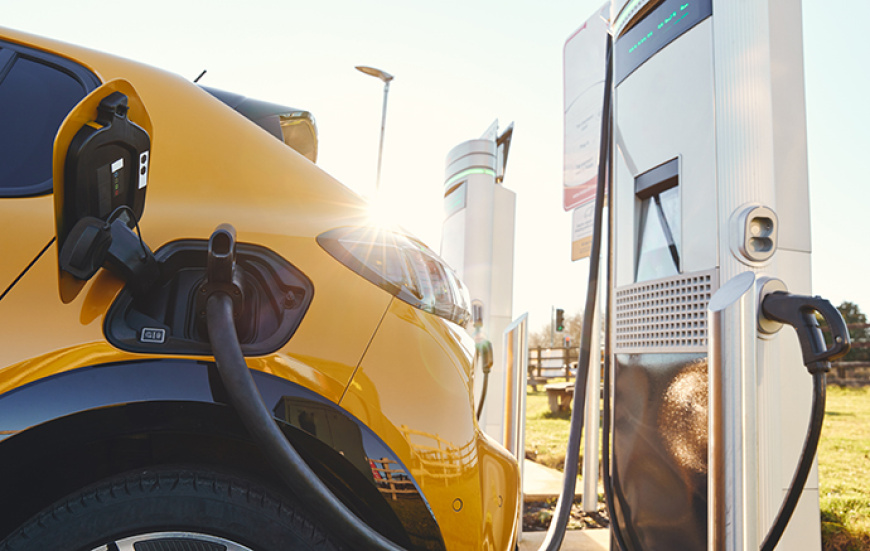
 back to all news
back to all news
As International Auto Show closes, it's time to shape our EV future

Liesl Eichler Clark is U-M’s director of climate action engagement.
There’s a chill in the air, the leaves are turning, students are back in school, and you can hear the marching bands. The North American International Auto Show in Detroit—in its new fall time slot—and the annual observation of Climate Week drew to a close over the weekend, highlighting the synergy between mobility and climate action, which are deeply intertwined. The emissions from transportation recently outpaced the emissions from energy generation, meaning that progress in both areas is critical to moving forward in a low-carbon manner. Now is the time to focus on our autonomous and electrified future.
The foundation for the future is being poured right here and right now. Michigan was an early adopter of a policy framework for the clean energy transition with legislation in 2008 that set the state on that path. Because of the signal that policy set for the market, we saw our coal fleet shrink from close to 60% of generation to all coal in Michigan now with a planned expiration date. And Michigan leads the Midwest in clean energy jobs with 123,000, an increase of close to 5% last year alone.
Shaping our future to position Michigan for the greatest prosperity and benefit for our people means taking action to continue to build on that foundation. Who do we want to be as a state? Where we are going depends on where we have been. Michigan is a manufacturing powerhouse and the state that puts the world on wheels. We make things, and we make things happen.
We are also well-positioned to be the state that accelerates the autonomous and electrified future for mobility and captures a large percentage of the estimated $5 trillion dollars of jobs and investment here. To do that, we must continue to innovate, just as we have in the past. Electric vehicles and hybrids make up 16% of all U.S. auto sales and that trajectory will continue. But they need a clean grid for manufacturing and to run on.
And that innovation means leaning into the energy transition that will improve our economy, our air and our jobs. Studies have shown that enabling state-level policies to cut emissions—like legislation being discussed now in Lansing—would lead to the creation of about 160,000 more jobs and over a 2.5% higher state GDP growth by 2050.
All energy solutions need to be on the table to decrease emissions and drive down costs through innovation as we’ve already seen. Wind and solar prices fell due to improved technology and lessons learned from deployment. From 2010 to 2019, the unit costs of solar energy fell 85%, while wind power dropped 55%. More improvements will be made by researchers and practitioners at Michigan universities, and new and existing companies around batteries, hydrogen, nuclear, geothermal, carbon capture and more. It’s all part of the puzzle. There are huge opportunities to secure federal Inflation Reduction Act funding here to supercharge our efforts.
And that innovation means collaboration, including our talented workforce, business, academia, government and communities. Now is the time to think about what we want our 83 counties to look like in 30 to 50 years and how we enable that future with people-centric solutions that result in prosperity for all.
At the University of Michigan, we are collaborating across campus boundaries and beyond to build the foundation of today for the Michigan of tomorrow. This is a unique point in time. The crossroads of mobility and sustainability are centered in Michigan. We can secure the supply chain and innovation industry of the future here. We want to attract and retain talent all along the workforce chain. The interdependency of these issues requires strong hands and talented minds to get it done.
Now is the time to come together—communities, industry, philanthropy, universities, government and organizations—to offer our own perspectives on how to move forward and to put our shoulders to the wheel together as we reinvent and reimagine Michigan’s path forward.

